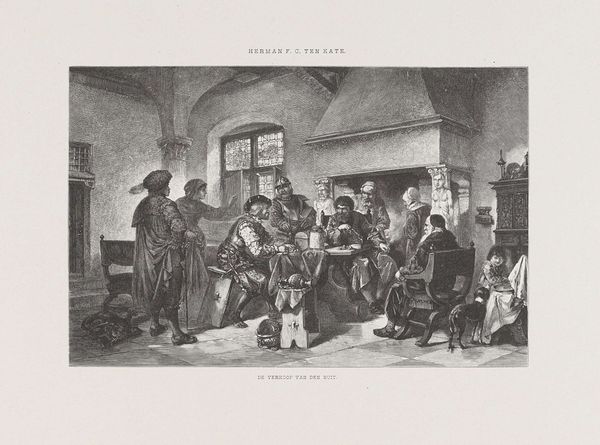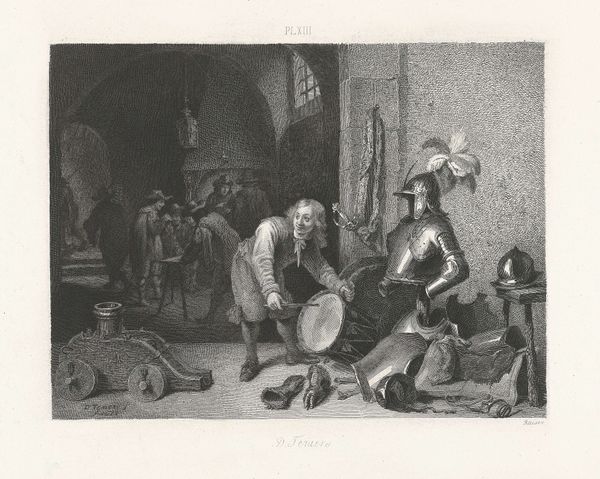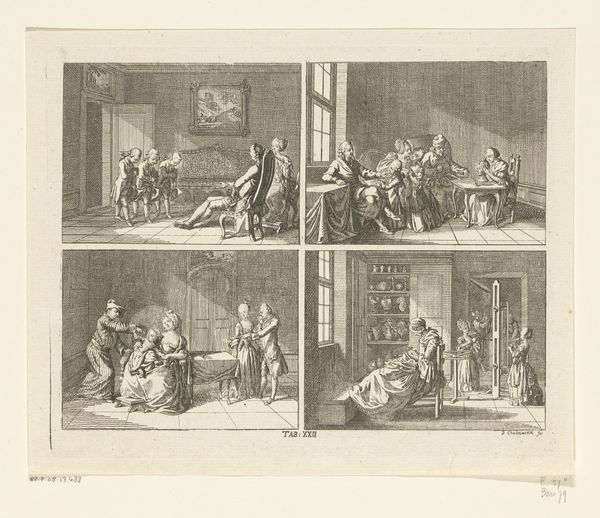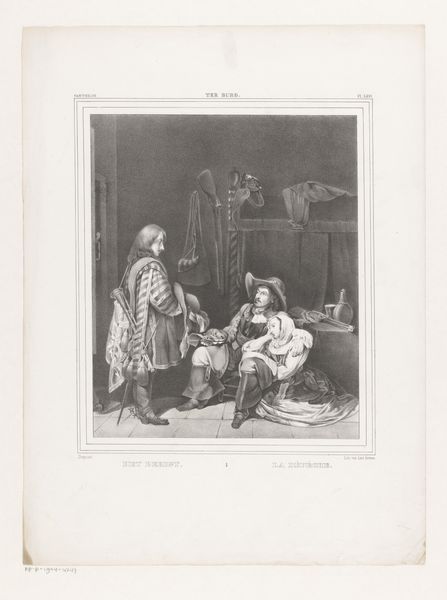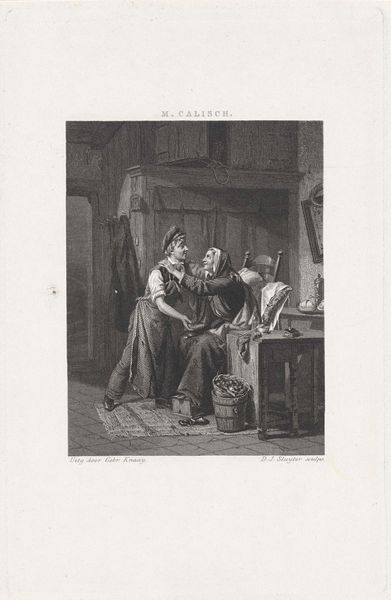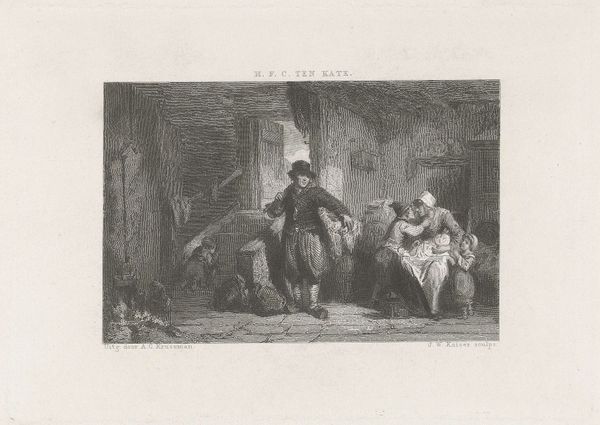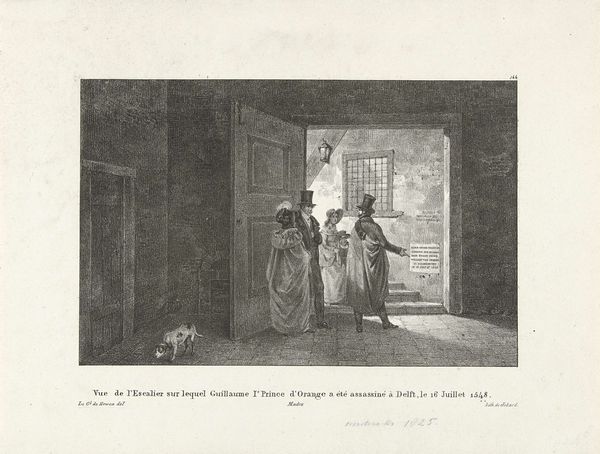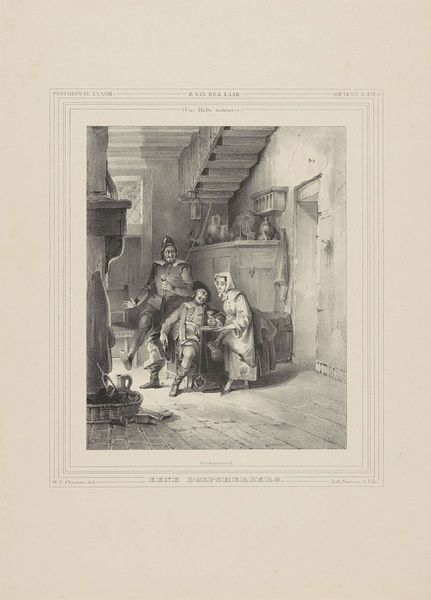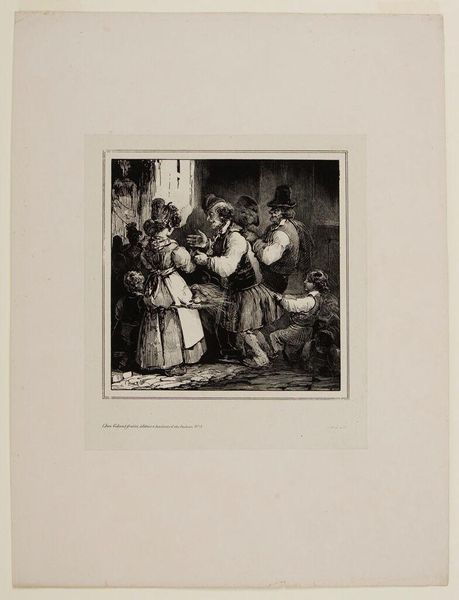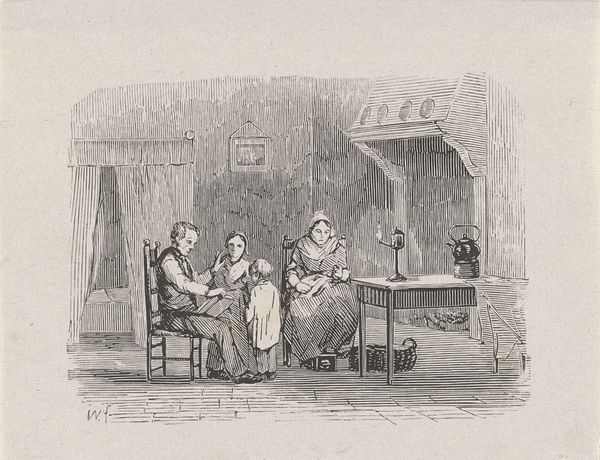
drawing, print, engraving
#
portrait
#
drawing
# print
#
landscape
#
figuration
#
genre-painting
#
academic-art
#
engraving
#
realism
Dimensions: height 329 mm, width 503 mm
Copyright: Rijks Museum: Open Domain
Editor: So, this is Christoffel Bisschop's "Schaatsenslijpen in Hindelopen," created sometime between 1874 and 1888. It's an engraving, so a print. I'm struck by how intimate the scene feels, like a little peek into a domestic space. What catches your eye? How do you interpret this work? Curator: What stands out to me is how Bisschop positions this domestic scene within the context of 19th-century Dutch society. Hindelopen was a very specific locale, known for its distinct cultural identity, even its own dialect. The act of sharpening skates connects directly to the community's survival and leisure in a harsh climate, embedding daily life with this strong sense of self-reliance. Do you notice anything in the clothing that speaks to a particular identity? Editor: Absolutely, those distinctive hats and layered dresses, especially the ornamentation, seem unique. The scene isn’t simply functional; it suggests cultural pride. Is there something more that makes it beyond face value? Curator: Yes, consider the subtle power dynamics within the image. The women are at the center of this productive activity; this emphasizes the key roles women played in maintaining the economic and cultural fabric of communities. How does this challenge or conform to traditional views of women's roles in the late 19th century? The seemingly simple act becomes quite loaded. Editor: I see what you mean! It’s a nuanced representation, showing them active in an area they dominate, contrasting with expected gender roles of that era. The women don't just exist—they do, actively. That changes how one reads this image, now focusing on what those skates mean for them. Thank you! Curator: And I appreciate how your observations helped focus on the agency of the women depicted here, a powerful lens for interpreting seemingly simple genre scenes!
Comments
No comments
Be the first to comment and join the conversation on the ultimate creative platform.
